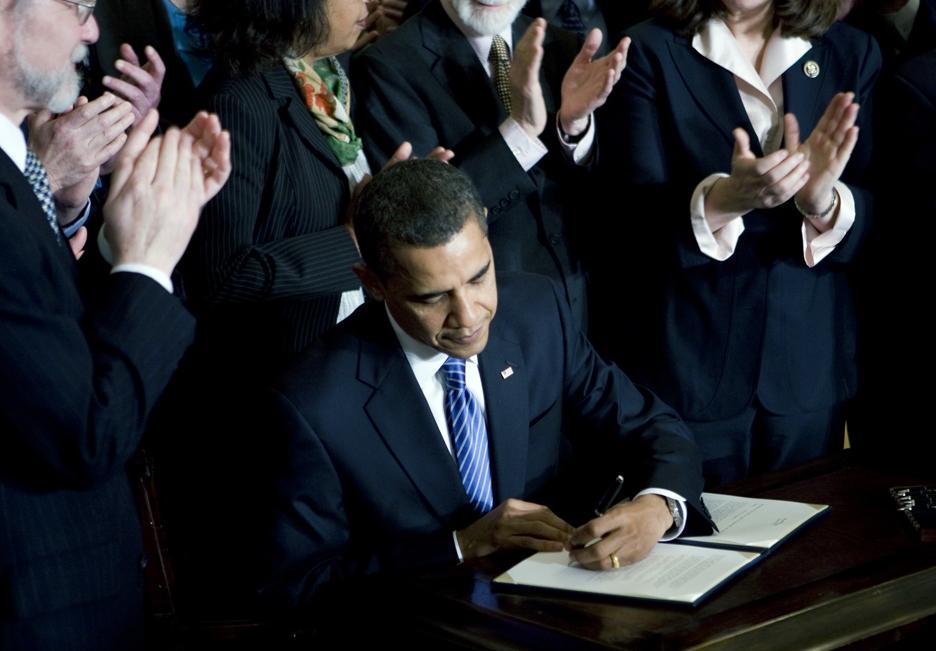Obama Lifts Stem Cell Research Ban, Sparking Discontent Amongst Pro-Life Advocates
June 20, 2011

Published: April 2, 2009
Limits on stem cell research enacted by the Bush administration have been reversed by President Barack Obama and were effective March 9. This action fulfills Obama’s campaign promise to separate science and politics and has sparked debate nationally and at Fordham College at Lincoln Center (FCLC).
Peter Steinfels, co-director of the Fordham Center on Religion and Culture, said that he sees Obama’s actions as “furthering illusions about ‘medical miracles’ banishing illness and disease.”
In contrast, Ion Craciun, FCLC ’12, said that he agrees with the new legislation and with “the notion that politics, religion and science should be autonomous of one another.”
Charles Camosy, assistant professor of Christian ethics at Fordham College Rose Hill (FCRH), said, “If the president is serious about [separating these two disciplines] as a broad philosophy, there truly is reason for hope—especially if we take seriously his desire to change the posture of our federal government to one that embraces science.”
Sarah Spangler, teaching associate and doctoral candidate in theology at Fordham, said that “those who oppose Obama’s reversal oppose not stem-cell research per-se, but research that destroys human embryos in order to get those stem cells. The argument hinges on the question of whether human beings have intrinsic dignity and intrinsic rights to life and liberty, and whether any state can be just or even legitimate if it allows for, and even funds the open violation of those rights.”
From the standpoint of someone who opposes the destruction of embryos in the name of science, Spangler said that “Obama’s move to legalize and even fund this practice is basically a move to have the state openly allow the most fundamental intrinsic rights to life of a certain group of humans (i.e. humans in very early development—embryos) to be violated.”
Under Bush, the funding for stem cell research was confined solely to the 21 existing stem cells. This pleased those opposed to abortion, since, “Pro-lifers will argue that the moral value of the vulnerable embryo should play a role in the debate,” Camosy said.
Yet alternatively, he said, “The time has come to take abortion politics out of the stem cell debate and let the scientific evidence decide where the money will go, and the beneficiaries of such a shift will be the most vulnerable among us—those waiting and hoping for us to find a cure for their deadly diseases.”
Embryonic stem cell research is believed to yield cures for many ailments, including paralysis and diabetes. The “pluri-potent structure of the cells allows them to be coaxed into rebuilding any of the three basic types of human tissue,” Camosy said.
According to Steinfels, Obama’s action was not surprising. Steinfels said that it was “in accord with public opinion polls and strong lobbying by the medical-industrial complex.” Steinfels said, “Such moves are morally problematic at the very least, and could be replaced by alternative methods.” He said that Bush’s legislation provided a good incentive for finding such alternate routes.
Steinfels said he sees the long-ranging implications of Obama’s legislations as “further erosion of the moral value that we place on human lives at their earliest stages, and further acceptance of the idea that human life is able to be manipulated and can be commercialized.”
Craciun, on the other hand, said he believes that “such research can not only provide potential cures to many present ailments, but can also provide a great deal of new and valuable insight into unexplored avenues of preexisting scientific fields such as biology, chemistry and genetics.”
Matthew Ortiz, FCLC ’12, said, “[Obama] clearly has the country’s best interests at heart, which may not have been true about the previous administration. He puts actions behind his words and fulfills his promises.” He also said it’s “ludicrous that this is such a controversial matter since wanting to find a cure for such debilitating diseases like Alzheimer’s and Parkinson’s seems self-evident.”
The Bush administration was often accused of “trying to shade, or even suppress, the findings of government scientists on climate change, sex education, contraceptives and other issues, as well as stem cells,” according to the New York Times. The Times also said that Obama is advocating for a return to “sound science.”
Though Camosy said that he is in favor of a general divide between science and politics, he also said he is somewhat skeptical of embryonic stem cell research. He said he feels that lost in the debate on this issue is the research at places like Wake Forest University’s Institute for Regenerative Research.
There, scientists are using cells in amniotic fluid for the same purpose as embryonic cells and are yielding irrefutable therapeutic results, according to Camosy.
“We should spend federal money on stem cell research that has the most scientific promise, which is not necessarily [embryonic stem cell research],” Camosy said.
Hayden Hartnett, FCLC ’12, said, “The question ultimately boils down to whether science and politics can ever truly be separated from religion and morality, and if such a state of events would even be desirable.”
She said, “Of course there is a controversy in a matter so closely related to the issue of abortion, and without a clear definition of what constitutes an existing human life, an embryo in the womb or an actual-born infant, this issue will remain quite a burning one.”









